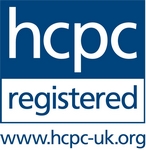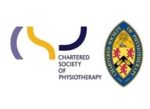Hip Osteoarthritis
Hip degeneration is a common problem due the weight bearing function of the joint. The joint has a mechanical ball and socket arrangement which allows for excellent range of movement.
As the joint surfaces degenerate this movement becomes restricted. One of first early signs is a limitation to turning the hip inwards (medial rotation).
Pain is typically felt during weight bearing activities and also at rest due to the chemical process of inflammation.
Diagnosis is a combination of clinical examination and x-ray. Treatment for the condition includes joint injections and these can be safely administered under ultrasound guidance.
Hip Osteoarthritis Treatment
Guided injections
Guided injections are an effective way to decrease hip joint inflammation and reduce pain.
Whilst they are not a cure, they can provide an effective way to minimise pain and allow strength and conditioning.
Guide hip injections are not easily accessed in the NHS, but are a common treatment delivered by the Injection Clinic.
Exercises
There is no way around it. For best health of the hip joint it must be taken through a range of movement and the muscles need to be kept strong.
Exercises tailored to a persons individual level provide best long term management.
Surgery
There are times when the best mechanical improvement arises from replacing the joint with a metal one. To determine what the best treatment is for your condition, book an appointment at Injection Clinic. If surgery is a valid treatment option we will advise accordingly.
Trochanteric Bursitis
Trochanteric bursitis is a common problem affecting ladies and in particular those who exercise.
One for the ladies
Because the female pelvis is wider and typically ladies sit and move with their knees closer together, there is a constant mechanical strain on the tissues passing over the outer edge of the hips.
As these tissue side and glide during normal movement; walking, running etc, they can eventually rub and irritate.
Pain
The pain felt from Trochanteric irritation /bursitis often affects sleep.
The pain is typically felt down the outside of the thigh and because of this downward leg pain the condition often gets diagnosed in-correctly.
Trochanteric Treatment
Guided injections
Guided injections are a very effective way to decrease Trochanteric Bursitis and reduce pain.
If the individual then corrects their bio-mechanical pattern of movement then a long term solution can be achieved.
Bio-mechanical correction
The key muscles to improve the movement and alignment of the hip include the Gluteal Muscles and in particular Gluteus Medius.
These muscles provide support and stabilise the joint in side ways movement.
Hip Impingement
Hip impingement refers to the mechanical 'pinching' of tissues between the ball joint (femoral head) and the socket (acetabulum). This can happen when tissues have become enlarged or the edge of the acetabulum (labram) is damaged.
Quite often the inflammation and damage occurs because of pre-existing bony changes to the ball joint (CAM deformity) or an increased depth of the acetabulum or bony changes that occur with joint degeneration (osteoarthritis).
These bony changes mean some people have hip joints that are more susceptible to hip impingement.
Even with subtle changes, if a person then participates in sports that have a high level of rotational and lunging activity, such as squash, then hip impingement is more likely.
A person will typically feel an increase in their pain when the move into a squat position or pull their knee up to their chest.
Re-current hip impingement can also cause damage to the labram and trigger inflammation in the joint capsule.
As with all conditions an accurate diagnosis will provide the necessary information to enable appropriate discussion with regard to best management.
Hip Impimgement Treatment
Guided injections
Guided injections are an effective way to decrease inflammation in the joint capsule. If there are no significant underlying bony changes, then an improvement in posture and pattern of movement can minimise the chance of re-occurrence.
Exercises
By minimising deep squats and rotational strain the joint capsule can settle and symptoms can ease. However as stated in the previous section, if there are significant bony changes or damage to the labrum, then surgery needs to be considered.
Surgery
There are times when the best mechanical improvement arises from making tissue and structural changes via surgery. Decompression by cutting away any bony irregulartities can improve function and minimise the cahnces of further damage and irritation.
As stated previously, best management will depend on a diagnosis.
New Patient Appointments
Examination
and
Ultrasound Scan
£90


